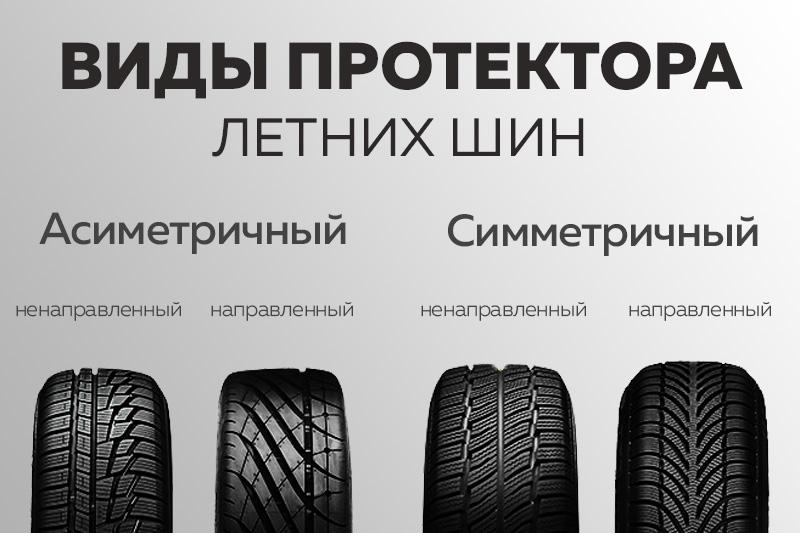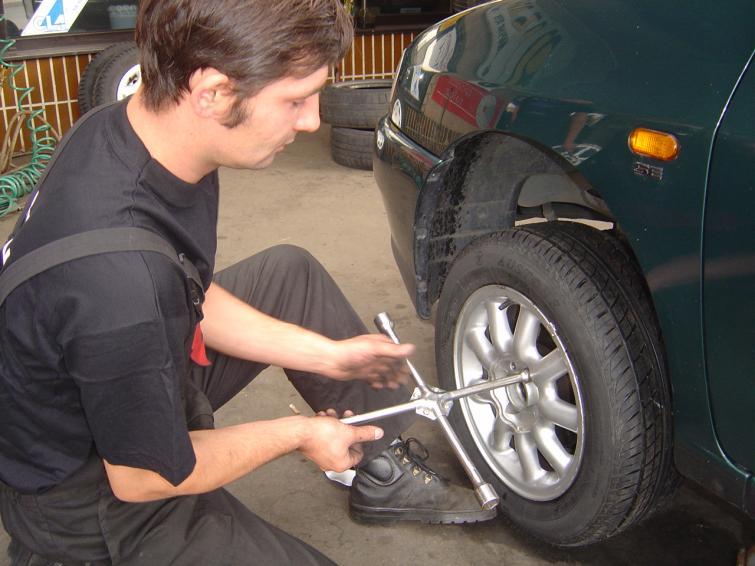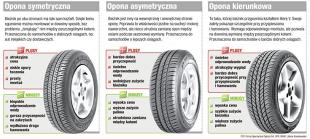
When to change tires for summer. What is the difference between protectors? Symmetrical, asymmetrical or directional?
 Are you buying new tires for your car? Think beyond what type and brand would be best before spending money. Also consider what kind of tread the new rubber should have. Sometimes you don't have to pay.
Are you buying new tires for your car? Think beyond what type and brand would be best before spending money. Also consider what kind of tread the new rubber should have. Sometimes you don't have to pay.
Summer tires are made from a harder compound than winter tires. Therefore, they perform worse at low temperatures, when they become stiff, lose traction and lengthen the braking distance. But at positive temperatures above seven degrees Celsius, they are much better. With larger cutouts, they evacuate water well and provide better grip than winter tires when cornering. According to weather forecasters, winter weather in Poland will last until mid-April. Then the average daily temperature should reach seven degrees Celsius. So it's time to change tires to summer. It is worth preparing for this now.
Tire size - it is better not to overdo it with the replacement
Tire size is selected based on the requirements of the car manufacturer. Information about them can be found in the instruction manual or on the gas tank flap. If we decide to install a replacement, remember that the wheel diameter (tire profile plus rim diameter) cannot differ by more than 3%. from exemplary.
Tire tread is more important than brand
 The choice of new tires in our market is huge. In addition to leading European manufacturers, drivers are tempted by Asian suppliers. For the statistical Kowalski, the choice can be very difficult. – Very often, drivers are influenced by the brand, not the type of tires. For a city car, they buy expensive foreign products, the benefits of which they will never use anyway. There are also situations where the owner of a powerful car prefers the most expensive symmetrical tire from a leading manufacturer instead of choosing directional tires from a lesser known brand. Many drivers don't realize that the tread is more important than the company's label, explains Andrzej Wilczynski, owner of a tire curing plant in Rzeszow.
The choice of new tires in our market is huge. In addition to leading European manufacturers, drivers are tempted by Asian suppliers. For the statistical Kowalski, the choice can be very difficult. – Very often, drivers are influenced by the brand, not the type of tires. For a city car, they buy expensive foreign products, the benefits of which they will never use anyway. There are also situations where the owner of a powerful car prefers the most expensive symmetrical tire from a leading manufacturer instead of choosing directional tires from a lesser known brand. Many drivers don't realize that the tread is more important than the company's label, explains Andrzej Wilczynski, owner of a tire curing plant in Rzeszow.
Three types of tires: asymmetric, symmetrical and directional
Three types of protectors are popular on the market.
Symmetrical tireshave the same tread on both sides. Thanks to this, they can be displaced along the axes in any way, ensuring uniform tire wear. Regardless of the way of assembly and the direction of rolling, the tires behave the same, so it is not necessary to remove them from the rims on the spacers. This is undoubtedly one of the biggest advantages of symmetrical tires. Secondly, low price due to simple design and low production cost. Due to the low rolling resistance, this type of tire is relatively quiet and wears slowly.
The biggest disadvantages of such tires include poor water drainage, which increases the braking distance of the car and increases the risk of aquaplaning.
– That is why symmetrical tires are most often used in cars with low power and dimensions. They are sufficient for urban vehicles, as well as for delivery vehicles that do not reach high speeds, explains Arkadiusz Jazwa, a vulcanizer from Rzeszow.
The second type asymmetrical tires. They differ from the symmetrical ones mainly in the tread pattern, which in this case has a different shape on both sides. Proper assembly is required, taking into account the inside and outside of the tires. For this reason, the tires cannot be moved between the axles in any way, which allows a symmetrical tread pattern.
The design of the asymmetric tire is more perfect. The outer side of the tires is made from stronger blocks, making this part much stiffer. It is he who is most loaded when cornering, when centrifugal force acts on the tires. Deep grooves on the inner, softer side of the tire evacuate water, making the car well protected from hydroplaning.
– These types of tires provide much better driving performance than symmetrical tires and wear evenly. Unfortunately, higher rolling resistance leads to higher fuel consumption, explains Andrzej Wilczynski.
Read more: Crossroads. How to use them?
The third popular type of tread is called a directional tread. Directional tires it is cut in the center in the shape of the letter V. The grooves are deep, so they drain water very well. Therefore, this type of tire performs well in difficult, rainy conditions. Rotation between the wheels is only possible with the correct rolling direction of the tire. Directional tires must be installed in the direction of the arrow stamped on the side. Tires on one side of the car can be swapped without removing them from the rims. To shift the tires from the right to the left side of the car, you need to remove them from the rim and turn them over. These types of tires are recommended for sports and premium vehicles.
New tire labels
From November 1, all new tires sold in the European Union are marked with new labels. Thanks to them, the driver can more easily evaluate tire parameters such as rolling resistance, wet grip and tire noise.
You can see the new labels and their descriptions here: New tire markings - see what's on the labels from November 1st
Summer tire prices have dropped
According to Arkadiusz Yazva, this year the share of summer tires will be about 10-15 percent. cheaper than last year. “Manufacturers miscalculated a bit and produced too many tires last year. The mass of goods simply did not sell. Yes, last year's tires will prevail in many stores, but you should not be afraid of them. Up to 36 months from the date of manufacture, tires are sold with a full guarantee, says Arkadiusz Yazva.
In automotive stores, domestic and foreign middle-class tires are the most popular. – Due to the good price-quality ratio, our bestsellers are Dębica, Matador, Barum and Kormoran. The products of leading brands such as Bridgestone, Continental, Goodyear, Michelin or Pirelli are chosen by significantly fewer buyers. The cheapest Chinese tires are marginal, they are not sold at all, the vulcanizer adds.
See also: Used tires and rims. Check if they are worth buying
For a summer tire in the popular size 205/55/16, you have to pay from PLN 220-240 for Dębica, Sawa and Daytona to PLN 300-320 for Continental, Michelin, Pirelli and Goodyear. The smaller one, 195/65/15, costs around PLN 170-180 for Kormoran, Dębica and Daytona to around PLN 220-240 for Pirelli, Dunlop and Goodyear. Changing tires in the workshop takes about 30 minutes. Cost - depending on the size and type of discs - PLN 60-100 per set, including balancing. Owners of cars with alloy wheels and 4×4 cars will pay the most. Storing a set of winter tires in place until the next season costs PLN 70-80.
Used tires only in good condition
Used tires are an interesting alternative to new tires. But vulcanizers advise buying them wisely, because an attractive price can be a trap. – For a tire to be suitable for safe driving, it must have at least 5 mm tread. It should be worn evenly on both sides. I do not advise you to buy tires older than four or five years,” says Andrzej Wilczynski. And he adds that it is worth leaving the opportunity to return the goods to the seller if it turns out to be defective. “Very often, the bulges and teeth are clearly visible only after the tire is mounted on the rim and inflated,” he explains.
According to Polish law, the minimum tread depth of a tire is 1,6 mm. This is evidenced by the TWI wear indicators on the tyre. However, in practice, you should not risk driving on summer tires with a tread thickness of less than 3 mm. The properties of such tires are much worse than the manufacturer expected. Most tires have a service life of 5 to 8 years from the date of manufacture. Old tires need to be replaced.
